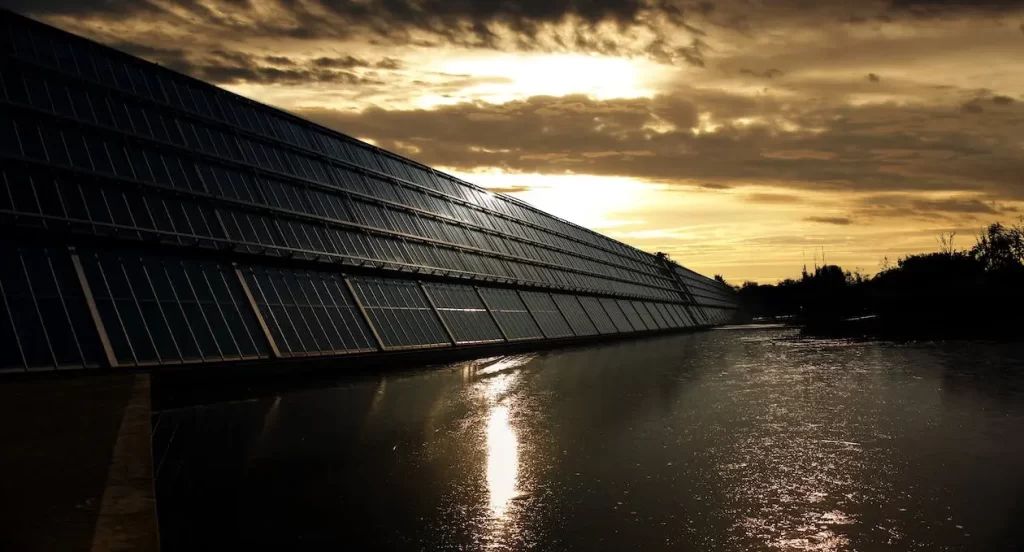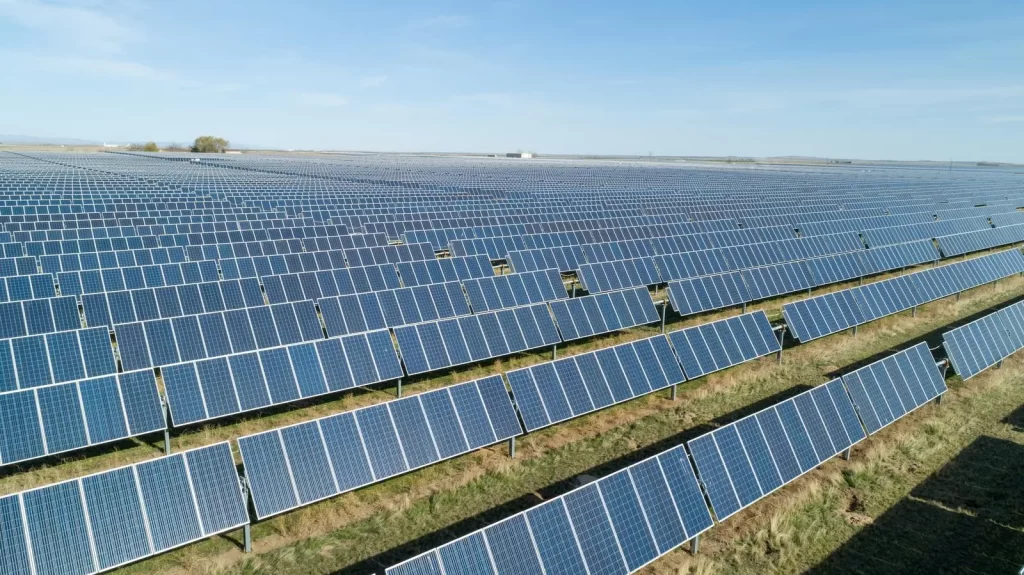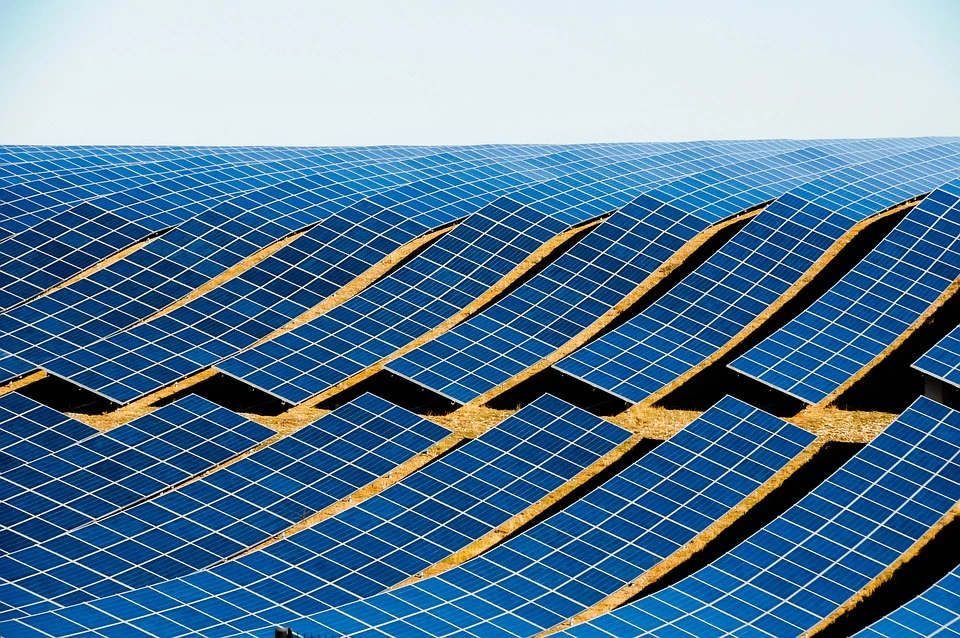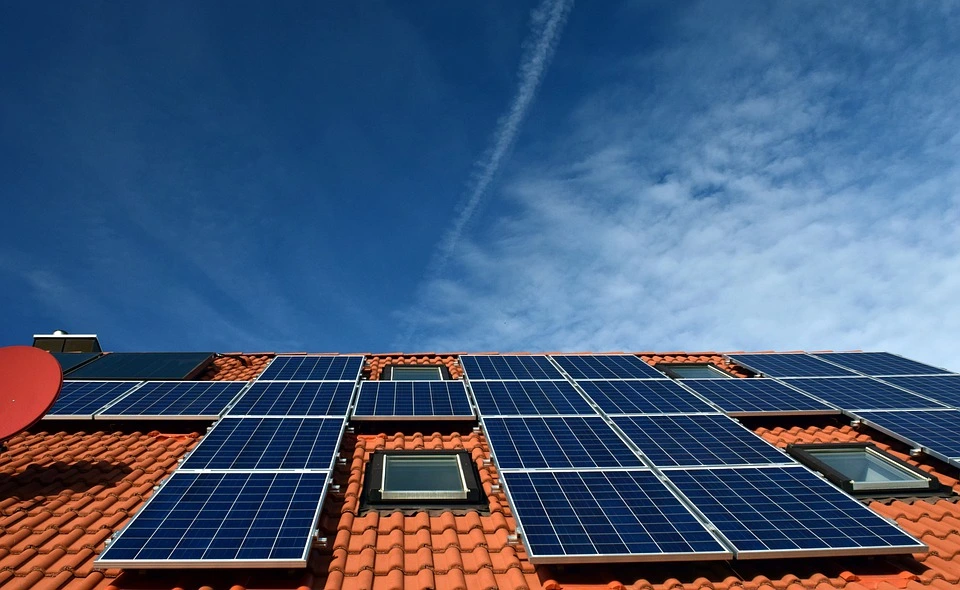With the cost of electricity inflating 3%-5% each year, you may be considering alternative sources of energy, such as solar.
But before you buy and install a solar system on your house, there are some major disadvantages of solar energy to consider.
We still think that getting a solar system is a good idea, especially compared to burning fossil fuels, but in the interest of fairness let’s take a look at the cons of solar panels.
Disadvantages of Solar Energy

In general, the disadvantages of solar energy include high cost, low efficiency, space needed for installing solar panels, the unreliability of sun exposure, and high pollution from manufacturing solar panels.
Concentrated solar power plants are massively expensive to install with very low return on investment. They’re also an eyesore and abandoned installations are polluting the American landscape.
With solar power having the highest initial costs of any other renewable energy source, you would think it would be pretty good. But in reality, solar panels have pretty low efficiency.
If you’re in a prime location you will be lucky to get more than a 22% conversion rate, with the best and most expensive technology available.
Then there is the potential of the solar panels being damaged by storms. Solar energy systems are expensive to replace.
What’s worse, damaged solar panels have to be handled and disposed of properly due to the toxic compounds used inside. They can’t be put in the landfill.
This article will discuss the disadvantages of solar energy that should be taken into consideration before deciding on whether or not to go solar.
10 Disadvantages of Solar Energy and Cons of Solar Panels

- Location & Sunlight Availability
- Solar Panels Use a Lot of Space
- Sunshine is Unreliable
- Solar Panels are Inefficient
- Solar Panels Create Environmental Degradation
- Solar Panel Production Uses Fossil Fuels
- Solar Panels Create Toxic Waste
- Expensive Energy Storage
- High Initial Cost
- Solar Panels Could Damage Your Roof
1. Location & Sunlight Availability
Latitude and seasonal availability are two main factors in determining the solar energy pros and cons in your area.
Latitudinal Solar Disadvantages
Not all locations get the same amount of annual sunlight, with the efficacy of solar power dropping dramatically the farther you get from the equator.
This means residents in places like the Northern United States, Canada, and Russia are at a solar disadvantage because there isn’t enough sunlight in a day to make solar a complete solution.
However, in places like Hawaii with an average of 277 days per year of rain and clouds, the location to the equator is irrelevant. The clouds often keep the sunlight from reaching the solar system.
Seasonal Solar Disadvantages
Solar efficacy is also determined by the season.
- In the summer you can generate more electricity than you need because the earth is tilted so that the sun is closer to your location.
- In the winter the earth’s tilt moves your location further from the sun making it so you can’t generate enough electricity to supply your needs.
- In areas that receive days or weeks of cloudy weather that brings rain and snow, the probability of converting any solar energy into electricity drops to zero regardless of the season.
Like everything else that is left in the sun, solar panels will undergo deterioration from ultraviolet rays, decreasing efficiency over time.
Things like wind, hail, snow, dirt, and temperature fluctuations are also serious threats to solar panels.
If your solar roof panels are covered with snow you’ll have to brush them off to make them work when the sun comes out.
2. Solar Panels Use a Lot of Space
For homeowners that want to install solar panels, the installation area is not going to be that big of a deal, especially when most of the time they are installed on the roof.
However, big companies that want to produce a lot of power are going to need a very large installation area to provide electricity on a consistent basis.
- The largest solar field is the Golmud Desert Solar Park located in China. It sits on about 640 acres and provides 2.8 gigawatts of power to 80 solar power plants.
More and more we see desert lands being occupied by solar panel fields. This isn’t land that is considered agricultural anyway, but the installation of solar fields creates environmental degradation.
The fact is that there isn’t enough space near most factories and industrial areas for installing solar panels to power the operations.
3. Sunshine is Unreliable

One drawback of solar energy is that it relies on the sun which isn’t always shining.
- Even if you live in an arid climate where the sunshine is very reliable, electricity cannot be generated during the night.
So you have to either store excess energy made during the day or connect to an alternate power source such as the local utility grid.
This means that you will have to pay more for electricity when you need it on top of the high cost of the solar system.
- Clouds and storms also restrict the amount of energy you can produce by blocking light rays that would have otherwise been absorbed by the solar panel.
- A good way to offset the draw on your solar panel system during the day is to install solar tube lighting to capture natural light and draw it into your home.
This will enable you to store more of the electricity you generate for use at night because the sun tunnel will pull more natural light into your home during the day so you can leave the lights off.
Plus, unlike solar panels, the sun tunnel cost is minimal so it won’t take a decade to pay it off.
4. Solar Panels are Inefficient
According to the Qualitative Reasoning Group with Northwestern University, most solar panels on people’s houses convert only 14% of their available energy into power.
- Even today’s most efficient solar panels convert only 22% of their available energy into power.
- According to the second law of thermodynamics, solar cells will never reach 100% efficiency.
- The highest theoretical maximum efficiency is 85%, and that’s with mirrors and motors to make the panels follow the sun.
- For a system that does not track the sun, the highest theoretical maximum efficiency is only 55%. The same is true for systems that track the sun on cloudy days.
This means that you either have to do without the amount of power that you need or install an oversized solar system to make sure that it can supply the power you need.
5. Solar Panels Cause Environmental Degradation

The environmental cons of solar panels are land and water use, pollution, habitat loss, and the use of highly hazardous materials in the manufacturing process that create toxic waste.
The land use by solar fields can be massive, and unlike wind power, sharing the land for agricultural use is not an option.
Solar power systems also affect land use when it comes to mining and the production of materials needed to produce photovoltaics.
Mining creates land and air pollution, burns fossil fuels for mining, transportation, and refining of minerals, and often creates water pollution as well.
It also strips away land creating environmental degradation – mainly human-caused erosion.
6. Solar Panel Production Uses Fossil Fuels
Solar panels also use an immense amount of coal in production. This means that as PV panel production increases, so does coal mining and our carbon footprint.
It takes 1 ton of coal to manufacture every residential PV array.
Because the United States gets most PV panels from overseas, we seem to think we can ignore this problem. This is one of the worst cases of greenwashing in the renewable energy sector.
There are billions of dollars to be made on solar panels, so the industry refuses to face the facts about the use of fossil fuels, carbon footprint, coal, and hazardous waste associated with photovoltaics.
The fact is that a con of solar panels is the need for coal – no matter where it’s being mined. Until coal is taken out of the equation we’re just pushing our voracious use of coal into a different form.
7. Solar Panels Create Toxic Waste

Among the compounds found in solar panels are cadmium and lead, extremely toxic metals.
There are a number of other toxic and hazardous materials used in the production of solar panels.
- Gallium arsenide
- Copper-indium-gallium-diselenide
- Hydrochloric acid
- Sulfuric acid
- Nitric acid
- Hydrogen fluoride
- 1,1,1-trichloroethane
- Acetone
In the United States, manufacturers are required to make sure these high-value substances are recycled rather than tossed in a landfill.
When the panels are decommissioned at the end of 20 years or so, they have to be disposed of carefully so they don’t contaminate the soil and water with arsenic, lead, and other hazardous materials.
However, in other countries such as China, Malaysia, the Philippines, and Taiwan, where most PV panels are manufactured, these hazardous materials are being irresponsibly disposed of in fields, polluting the air, water, and soil.
Just in case you think that’s not a big deal, consider that in 2020, 89% of the solar panels Americans installed were imported, mainly from Asia.
So the odds are that the ones you buy are being irresponsibly produced.
Contributing to the pollution problem somewhere else is still contributing to the problem.
We should all be concerned about and aware of the causes and effects of pollution and how they affect our health and environment.
Here’s a great, balanced video that explains the cons of solar panels while also giving us hope that the future of solar panels will be clean and sustainable.
8. Expensive Energy Storage
Most consider renewable energy storage systems to be the single biggest obstacle in producing solar power on an industrial scale.
Currently, the battery storage system options for storing solar energy as electrical energy are very expensive.
Tesla has created the Powerwall battery to store solar energy for later use. However, with one battery costing around $11,500, these batteries are very expensive.
If you wanted to have one day’s worth of energy needs for a four-bedroom house, you would need 2 Tesla batteries, coming to a whopping total of $18,500.
The price per battery does drop with each additional unit you order. However, they don’t let you get only the Powerwall anymore. You have to purchase an entire solar panel system from Tesla.
One of the main benefits of recycling batteries is that the recovered materials make battery production cheaper. We expect to see these lithium-ion batteries come down in price over time.
9. High Initial Cost
It costs between $15,000 and $29,000 for average-sized systems that produce between 4kW and 8Kw of power.
These costs include the solar panels, inverter, mounting hardware and wiring, installation, permits, repairs, monitoring and maintenance costs, and additional operation and overhead costs.
Be aware that this does not include a battery storage system, which is an additional cost.
Battery storage systems are necessary if you expect to get electricity from your system any time the sun isn’t shining.
If you factor in the cost of a battery storage system you’re looking at a total cost of between $33,300 and $47,300 to reliably supply energy needs, day and night, for the average four-bedroom household.
Even then depending on the climate and your location, you may have to reduce usage or increase the size of your system to meet your needs.
Another factor to consider when looking at the initial cost is the payback period.
For an $18,000 system, you are looking at 20 years before you make the money back from the savings created by a solar power system.
The flip-side is that while a solar panel system may not pay off financially, it does take the load off of your local power grid. This is a good thing if the power grid has to burn coal or oil to provide electricity.
10. Solar Panels could Damage your Roof

We all want to consume less electricity when we’re not using it. We can use solar panels to help generate electricity, but they might be damaging your roof in the process.
Solar installation that’s done wrong could leave holes in the roof that would lead to water leakage causing significant damage to both the exterior and interior of your home.
To avoid this, take the time to find a good solar company and ensure they have good reviews.
Solar panels need additional support to be securely mounted, due to the weight of the panels.
If the roof is not durable or has any weak spots, the panels could cause your roof to crack or “flatten” over time due to additional weight.
We recommend a proper assessment is done on the integrity of your roof, to confirm the roof can withstand the weight of the panels.
If the panels are installed at a steep angle, it can cause them to falter over time causing damage to the roof.
If the panels are too high or low on the roof issues may arise in the attic or interfere with gutter function.
These potential issues may void your roof warranty. It is important to check with your roof installation company to ensure the addition of any solar panels would not interrupt coverage.
Future of Solar Technology

While solar energy is considered an inexhaustible renewable resource, the way we currently harness that energy has many disadvantages.
However, solar technology is still in its infancy and many good ideas are beginning to surface.
For example, research on renewable energy storage issues has found two different methods that could be used to store electrical energy in the future.
Scientists are creating flow batteries that use small organic molecules that help rhubarb plants store energy, called quinones, rather than the toxic and expensive vanadium ions.
Researchers predict this technology could take the present cost from $0.02 per kilowatt-hour down to $0.0025 per kilowatt-hour.
The other method, which is really quite ingenious, takes the solar energy produced to create methanol from carbon dioxide instead of electricity.
The plan is that a plant would burn the methanol as fuel, which would convert it back to carbon dioxide that would be re-captured and stored.
The goal is to reduce emissions by recycling carbon, instead of letting escape into the atmosphere.
Disadvantages of Solar Energy to the Environment
The main disadvantages of solar energy to the environment are the fossil fuels required to manufacture, and the wide array of toxic chemicals and rare earth metals needed for each panel.
Even though solar panels are responsible for greenhouse gas emissions, they don’t have anywhere near the impact on the atmosphere as burning fossil fuels.
So, while we acknowledge that solar panels aren’t where they need to be for the green energy future, they’re certainly cleaner than what we’re doing now.
Final Thoughts
Solar energy for large-scale installations has a long way to go before it can truly be called green energy. There is still too much pollution and toxicity associated with PV panel production.
However, research is humming along that will soon be able to eliminate toxic ingredients and replace rare earth metals.
We’re confident that the future of solar energy is bright!
What are your thoughts about the cons of solar panels? Do you think there are disadvantages of solar energy? What are your ideas to improve panel manufacturing and energy storage?
Let us know in the comments below!
